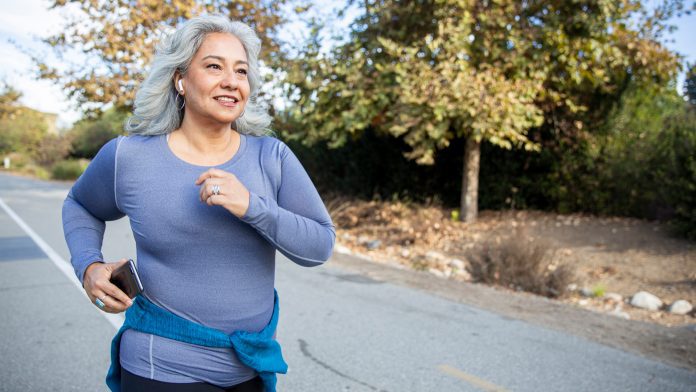
Early post-operative exercise appears to help women recover better from breast cancer surgery when compared to receiving standard care only, a new study shows.
A new study published by The BMJ suggests that women who exercise shortly after having non-reconstructive breast cancer surgery appear to regain better shoulder and arm mobility and experience less pain than those who received standard care.
The research, carried out by a team at the University of Warwick, signifies that the exercise programme starting a week after breast cancer surgery is clinically and cost-effective. The programme appears to reduce upper limb disability one year after breast cancer surgery in women at higher risk of complications.
Common side effects of breast cancer surgery
Up to one-third of women experience shoulder and arm problems after breast cancer surgery. Common side effects include restricted shoulder movement, chronic pain, or swelling (lymphoedema) in the armpit area, limiting their quality of life and delaying recovery.
In the UK, guidelines recommend gradual reintroduction of exercise after non-reconstructive breast cancer surgery; however, the lack of good evidence about the timing, intensity, safety or impact of post-operative muscle strengthening creates uncertainty.
To bring clarification to the guidelines, the researchers conducted a trial to evaluate whether a structured exercise programme could improve functionality and health-related quality of life compared to the usual care for women at risk of upper limb disability after breast cancer surgery.
The study involved 392 women with an average age of 58 years who have a high risk of post-operative upper limb problems to conduct their research. Furthermore, the women were randomised into two equal groups, with half receiving usual care (information leaflets) with structured exercise and the other half receiving standard care.
The exercise programme, known as the Prevention of Shoulder Problems (PROSPER), was led by physiotherapists and included stretching, strengthening, physical activity, and behavioural change techniques. It was introduced 7-10 days after surgery, with two further appointments one and three months later.
12 months after the breast cancer surgery, the women were asked to answer a detailed questionnaire about their activity levels, pain, swelling, and quality of life. The researchers measured their answers to see if there was any correlation, and to solidify their findings further, looked at hospital records to see how often the women used health services.
Exercise and recovery: what did the results show?
The results were gathered between January 2016 and July 2017, revealing that upper limb function improved after exercise compared with usual care.
At the one-year mark, women who exercised reported lower pain intensity, fewer arm disability symptoms and better health-related quality of life than those in the standard care group. No serious adverse events were reported. However, there were no differences in the rate of neuropathic (nerve) pain, wound-related complications, surgical site infection, swelling, or other complications between the two groups of women.
Exercise also proved to be cost-effective, with the exercise programme costing on average £129 per patient. Further savings were made when the researchers calculated the cost of healthcare and personal social services for the exercise group and found an average of £387 saving per patient compared to the standard care group.
The study highlighted limitations that could not be avoided; for example, the participants and physiotherapists knew which treatment they were receiving, alongside the loss of participants when followed up.
The study’s strengths included a substantially larger sample size than previous trials, a longer follow-up period, and exercise delivered by NHS physiotherapists from 17 different cancer units in different locations across England.
The researchers concluded: “We found robust evidence that early, structured, progressive exercise is safe and clinically effective for women at higher risk of developing shoulder and upper limb problems after non- reconstructive breast surgery. The PROSPER exercise programme improved upper limb function one year after breast cancer surgery and was cost-effective compared with usual NHS care. Our manualised exercise intervention is suitable for wider implementation in clinical practice.”






















